- News
- Reviews
- Bikes
- Components
- Bar tape & grips
- Bottom brackets
- Brake & gear cables
- Brake & STI levers
- Brake pads & spares
- Brakes
- Cassettes & freewheels
- Chains
- Chainsets & chainrings
- Derailleurs - front
- Derailleurs - rear
- Forks
- Gear levers & shifters
- Groupsets
- Handlebars & extensions
- Headsets
- Hubs
- Inner tubes
- Pedals
- Quick releases & skewers
- Saddles
- Seatposts
- Stems
- Wheels
- Tyres
- Tubeless valves
- Accessories
- Accessories - misc
- Computer mounts
- Bags
- Bar ends
- Bike bags & cases
- Bottle cages
- Bottles
- Cameras
- Car racks
- Child seats
- Computers
- Glasses
- GPS units
- Helmets
- Lights - front
- Lights - rear
- Lights - sets
- Locks
- Mirrors
- Mudguards
- Racks
- Pumps & CO2 inflators
- Puncture kits
- Reflectives
- Smart watches
- Stands and racks
- Trailers
- Clothing
- Health, fitness and nutrition
- Tools and workshop
- Miscellaneous
- Buyers Guides
- Features
- Forum
- Recommends
- Podcast
review
£3,700.00
VERDICT:
Dependable and well-handling race bike that can be ridden year-round
Weight:
8,310g
Contact:
At road.cc every product is thoroughly tested for as long as it takes to get a proper insight into how well it works. Our reviewers are experienced cyclists that we trust to be objective. While we strive to ensure that opinions expressed are backed up by facts, reviews are by their nature an informed opinion, not a definitive verdict. We don't intentionally try to break anything (except locks) but we do try to look for weak points in any design. The overall score is not just an average of the other scores: it reflects both a product's function and value – with value determined by how a product compares with items of similar spec, quality, and price.
What the road.cc scores meanGood scores are more common than bad, because fortunately good products are more common than bad.
- Exceptional
- Excellent
- Very Good
- Good
- Quite good
- Average
- Not so good
- Poor
- Bad
- Appalling
The Forme Flash provides a reliable and speedy ride for a decent price. The exposed Di2 junction box looks a little old hat and some neater integration could put it up there with the very best cutting edge disc brake road bikes, but everywhere else it's bang up to date and suitable for someone who wants a fast ride for training year-round that they can also race on.
- Pros: Decent value, strong spec with few compromises, comfortable for a race bike
- Cons: Untidy front end, cheap headset, race wheels would bring the best out of the frame
The Flash had a fresh makeover last year, and Forme's relaunched race bike is available with a T700 grade carbon frame that I was testing, or a slightly higher modulus T800 frame on the Flash SL version.
> Find your nearest dealer here
You can mix and match most of the main build options with Forme's dealers as the bikes are built up after you've ordered it, so although our Flash with Shimano Ultegra Di2 and Mavic Ksyrium tubeless-ready alloy wheels doesn't appear as an option on Forme's website, you'll be able to spec it this way if you so desire.
The builds start from £2,300 with a Shimano 105 groupset and cheaper Mavic Aksium wheels, going up to £4,400 for the Flash SL with Ultegra Di2 and Mavic Cosmic Pro Carbon race hoops.
True to its Derbyshire roots, Forme has gone quite specific with the design and spec of the Flash, offering something fast yet still built to take "a proper British hammering" as the company describes it. This means flat-mount disc brakes and 12mm thru-axles throughout the range (although you can go for calliper brakes if you prefer) and tubeless-ready wheels and tyres. The 25mm Mavic Yksion Pro UST tyres were supplied with tubes on my test bike; I think it's a wise idea and a realistic one, as most of us who can't budget for a different bike for each season can use it for training year-round with a lower risk of punctures if you're running tubeless tyres.
Forme has left the Di2 junction box and all the wires poking out of it exposed underneath the stem. It does look a bit old fashioned and untidy, and if you stress about those aero gains it could arguably lose you a watt or so. Forme says it's looking into more integrated bars and stems for next year, and in a time where we're seeing road bikes that appear completely cable-less, it would be nice to have the option to clean up that front end.
The overall look of the bike is one that's built to go fast but not too intimidating, with a subtle cutout in the seat tube and dropped stays for some added comfort and vibration damping, plus a skinny, straight top tube that flares out where it meets the chunkier head tube.
The geometry is pretty similar to that of many other race bikes, although I found the 16cm head tube on my 54cm frame made for a slightly more upright ride feel than on some rivals. The 55cm Bianchi Aria aero road bike, for example, has the same effective length top tube as I have here – 55cm – but the head tube on that bike is just 14cm. You still get an aggressive riding position on the Forme, and I found that I could stay comfortable during longer days in the saddle.
The ride
I rode the Flash through the back end of summer and into autumn, giving it the British hammering it was made for around my local dodgy Somerset backroads, and it passed the test admirably. It accelerates nicely and feels comfortable over rough roads and potholes, with a lovely damping quality.
At 8.3kg it's not the lightest bike out there, but climbs pretty well with plenty of frame stiffness, particularly in the rear triangle. I wouldn't say the Flash is ultra-precise going through tight corners, but plenty of stability allows you to descend confidently.
We've praised Shimano's latest Ultegra groupset many times on road.cc since it launched late last year and it's perfectly suited to a race bike, with crisp shifting plus sharp and powerful brakes that work flawlessly on Shimano's 140mm Ice Tech rotors.
Fizik's Aliante saddle with chromoly rails is a popular choice and one that I probably wouldn't need to change if I was buying my own Flash, and Forme's own compact handlebar is ergonomically sound with 80mm of reach and a 42cm width.
I was happy to run the Yksion tyres with tubes for the test period. They roll well, and having the option to go tubeless is great. There is clearance for up to 28mm tyres but you'll need to stick to 25s if you want to run clip-on mudguards (there are no mudguard mounts, this being a race bike).
Over the test period I did experience a problem with the FSA Orbit headset; namely, that it came loose after a particularly bumpy training ride. The headset relies on a tiny rubber ring to seal it underneath the spacers. This snapped, causing the headset to come loose. This is a headset that has been specced on a lot of bikes we've reviewed here on road.cc and we've never had a problem before, so maybe it was just bad luck this time around.
Value
Although other factors will determine the overall price, for an Ultegra Di2 build this bike isn't bad value at all at £3,700. You can get cheaper, with the Vitus Vitesse Evo CRI Ultegra Di2 coming in at £3,199, but it's comfortably less than Giant's Propel Advanced Pro Disc at £4,899, although that comes with deep-section race wheels.
> Buyer's Guide: 11 of the best mudguard-compatible carbon road bikes
The Specialized Tarmac Disc Pro with Ultegra Di2 is a whopping £5,750; for that you could buy our test version of the Flash and some race wheels with change to spare.
Conclusion
Overall I was largely very impressed with the Flash. I see it as suiting a rider who wants a fast bike to ride year-round, and with a geometry that's aggressive... but not too aggressive. If I was to buy it I'd most likely go for the carbon wheels and then get my own cheaper set of tubeless-ready training rims and tyres to run though the winter months. The weight and integration isn't quite up there with the very best on the market, but for the price and the versatility it offers, the Flash is very good indeed.
Verdict
Dependable and well-handling race bike that can be ridden year-round
road.cc test report
Make and model: Forme Flash Ultegra Di2
Size tested: 54cm
About the bike
List the components used to build up the bike.
T700 UD Carbon frame
Carbon tapered steerer, 12mmx100mm thru axel, flat mount disc
Shimano Ultegra Di2 full groupset (brakes, crankset, shifting, derailleurs, cassette)
11-28 cassette, 52/36 chainrings
KMC X11 chain
Mavic Ksyrium Elite UST wheels
Mavic Yksion Pro UST tyres, 25mm
Fizik Aliante saddle
Forme Compact handlebar
Forme Stealth stem
BB92 pressfit bottom bracket
Carbon seatpost with one bolt clamp
Hydraulic disc brakes, 140mm rotors
Tell us what the bike is for and who it's aimed at. What do the manufacturers say about it? How does that compare to your own feelings about the bike?
Forme says: "The Flash provides stable acceleration and tracking with exceptional agility and comfort. Engineered using optimal modulus T800 and T700 carbon fibre to a size specific lay-up, with carefully pinpointed resin positioning and intelligent tube design to create a frame that can take a true British hammering! Tailor Built using one of 2 frame grades and fitted with either caliper or disc brakes. Front and Rear Thru-axles provide improved stiffness, precise installation and improved safety whilst also eliminating the tedious grind of the brake discs."
Where does this model sit in the range? Tell us briefly about the cheaper options and the more expensive options
This is the less expensive version of the Flash (Forme's race bike) with a lower grade T700 carbon frame and alloy rims. The T800 frame with carbon wheels is £4,400. Forme also does the Longcliffe endurance/entry-level alloy road bike.
Frame and fork
Overall rating for frame and fork
8/10
Tell us about the build quality and finish of the frame and fork?
Nice looking frame with a smooth finish.
Tell us about the materials used in the frame and fork?
T700 grade carbon fibre.
Tell us about the geometry of the frame and fork?
55cm effective top tube on 54cm bike
72° head angle
74° seat tube angle
41cm seatstay length
16cm head tube length
39.5cm reach
99.8cm wheelbase
How was the bike in terms of height and reach? How did it compare to other bikes of the same stated size?
I reviewed the 54cm model with a 55cm effective top tube, which is a bit longer than you might expect. The head tube is 16cm which is also a touch taller than that of some rivals.
Riding the bike
Was the bike comfortable to ride? Tell us how you felt about the ride quality.
It felt quite comfortable for a race bike, with an aggressive enough riding position to get aero.
Did the bike feel stiff in the right places? Did any part of the bike feel too stiff or too flexible?
Plenty stiff enough, no problems.
How did the bike transfer power? Did it feel efficient?
Not as super-responsive as some of the most aero race bikes, but it rolls well when it's up to speed.
Was there any toe-clip overlap with the front wheel? If so was it a problem?
No.
How would you describe the steering? Was it lively neutral or unresponsive? Quite lively, corners well.
Tell us some more about the handling. How did the bike feel overall? Did it do particular things well or badly?
It cruises well and is comfortable over longer distances.
Which components had the most effect (good or bad) on the bike's comfort? would you recommend any changes?
Wider tyres would help (it can take 28mm tyres, but not with mudguards), but otherwise it's a comfortable ride.
Which components had the most effect (good or bad) on the bike's stiffness? would you recommend any changes?
In terms of stiffness, no.
Which components had the most effect (good or bad) on the bike's efficiency? would you recommend any changes?
Carbon race wheels would bring more out of the frame; in terms of aerodynamics a cleaner front end would save a few watts.
Rate the bike for efficiency of power transfer:
7/10
Rate the bike for acceleration:
7/10
Rate the bike for sprinting:
7/10
Rate the bike for high speed stability:
8/10
Rate the bike for cruising speed stability:
9/10
Rate the bike for low speed stability:
8/10
Rate the bike for flat cornering:
7/10
Rate the bike for cornering on descents:
7/10
Rate the bike for climbing:
8/10
The drivetrain
Rate the drivetrain for performance:
9/10
Rate the drivetrain for durability:
9/10
Rate the drivetrain for weight:
8/10
Rate the drivetrain for value:
8/10
Tell us some more about the drivetrain. Anything you particularly did or didn't like? Any components which didn't work well together?
A full Shimano Ultegra Di2 groupset works perfectly.
Wheels and tyres
Rate the wheels for performance:
7/10
Rate the wheels for durability:
8/10
Rate the wheels for weight:
8/10
Pretty light for alloy rims.
Rate the wheels for comfort:
7/10
Rate the wheels for value:
8/10
Tell us some more about the wheels.Did they work well in the conditions you encountered? Would you change the wheels? If so what for?
They are fine for year-round riding and durable, but I'd want to swap to carbon wheels for racing.
Rate the tyres for performance:
8/10
Appeared to roll well, but worth changing to a tubeless setup to bring the best out of them.
Rate the tyres for durability:
9/10
Rate the tyres for weight:
8/10
Rate the tyres for comfort:
8/10
Rate the tyres for value:
8/10
Tell us some more about the tyres. Did they work well in the conditions you encountered? Would you change the tyres? If so what for?
Being tubeless-ready, the tyres are likely to be best run that way. If I wanted to use inner tubes I'd probably change them for something like Continental GP4000s or Michelin Power Competitions.
Controls
Rate the controls for performance:
8/10
Rate the controls for durability:
8/10
Rate the controls for weight:
8/10
Rate the controls for comfort:
8/10
Rate the controls for value:
7/10
Anything else you want to say about the componentry? Comment on any other components (good or bad)
Forme says it's looking into more integrated bars and stems for next year, which I'd be in favour of to make it look as good as the current crop of high-end road bikes.
Your summary
Did you enjoy riding the bike? Yes
Would you consider buying the bike? Yes
Would you recommend the bike to a friend? Yes
How does the price compare to that of similar bikes in the market, including ones recently tested on road.cc?
It's a reasonable price but a little more than the cheapest out there – the Vitus Vitesse Evo CRI Ultegra Di2 is £3,199. Giant's Propel Advanced Pro Disc is £4,899, but comes with race wheels. The Specialized Tarmac Disc Expert with mechanical Utegra is more at £4,000.
Rate the bike overall for performance:
8/10
Rate the bike overall for value:
8/10
Use this box to explain your overall score
The Flash is a really nice ride and does what it claims to do, capable of being raced but built to use year-round on the mostly terrible roads around the UK. The weight and integration isn't quite up there with the very best aero road bikes, but for the price it's a very good offering.
About the tester
Age: 27
I usually ride: Road bike (currently Specialized Tarmac) My best bike is: Ridley Chronus TT bike
I've been riding for: Under 5 years I ride: Every day I would class myself as: Experienced
I regularly do the following types of riding: road racing, time trialling, commuting, club rides, sportives, general fitness riding, triathlon races
Jack has been writing about cycling and multisport for over a decade, arriving at road.cc via 220 Triathlon Magazine in 2017. He worked across all areas of the website including tech, news and video, and also contributed to eBikeTips before being named Editor of road.cc in 2021 (much to his surprise). Jack has been hooked on cycling since his student days, and currently has a Trek 1.2 for winter riding, a beloved Bickerton folding bike for getting around town and an extra beloved custom Ridley Helium SLX for fantasising about going fast in his stable. Jack has never won a bike race, but does have a master's degree in print journalism and two Guinness World Records for pogo sticking (it's a long story).
Latest Comments
- lonpfrb 3 sec ago
No, it's meant literally that the narcissistic sociopath in chief prefers all his loyal supporters in that position. I neither know, nor care, if...
- hawkinspeter 50 min 12 sec ago
Fire engine gets stuck behind east Bristol LTN bollard:...
- Rendel Harris 1 hour 35 min ago
Oh dear, you still don't understand, do you? Nobody has restricted his right to free speech, nobody has banned him from any platform, people are...
- mdavidford 2 hours 22 min ago
It's a lot harder to get hold of aftermarket mounts for lamb chops, too.
- David9694 3 hours 12 min ago
"Make me to know your ways, O LORD; teach me your paths." - Psalm 25:4
- anotherflat 3 hours 38 min ago
So uninsured?...
- Bigtwin 4 hours 34 min ago
Is the relvant authorites are so inept they can't even efficiently tax someone who sole relevant skill is that they drive a car quickly in a circle...
- Bigtwin 4 hours 42 min ago
Clarkson. Fat moron's icon talking tocix ill-informed bollix shocker. If ever there was someone who should just be put out to grass with the rest...
- Garethhall74 5 hours 17 min ago
It will be interesting what new features or functions the new Booky and Roam V3's have, plus if any new functions get added to the element app....
- Rendel Harris 5 hours 50 min ago
I know they're the dregs but that really would be scraping the bottom of the barrel.


































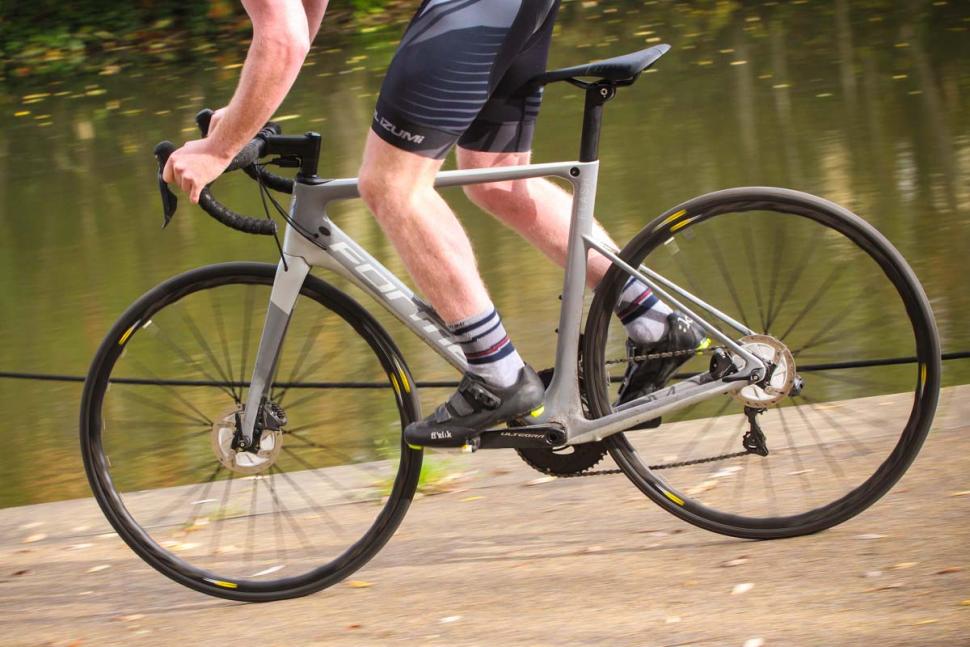


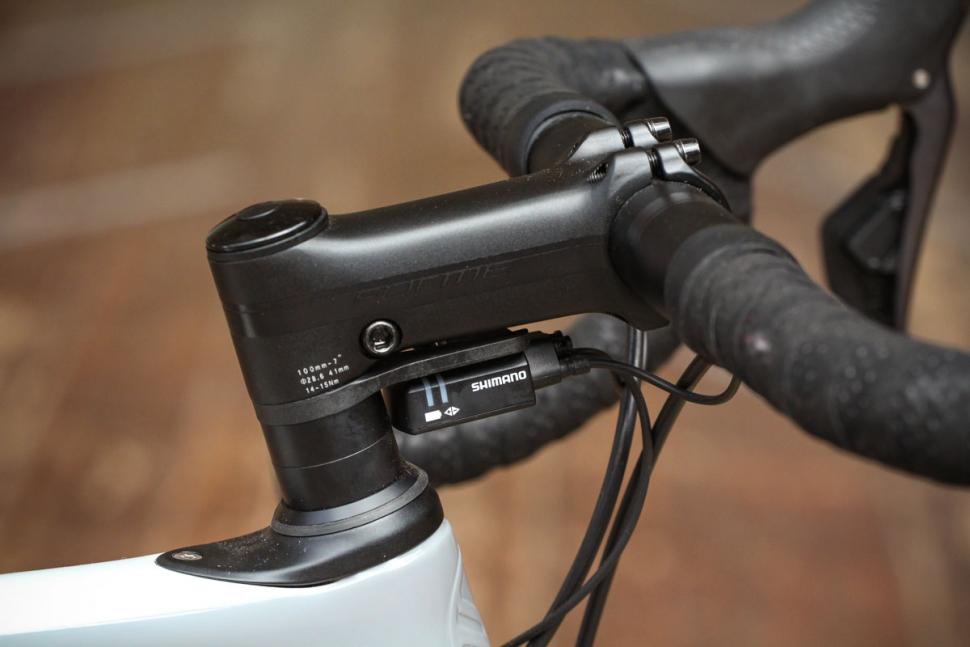
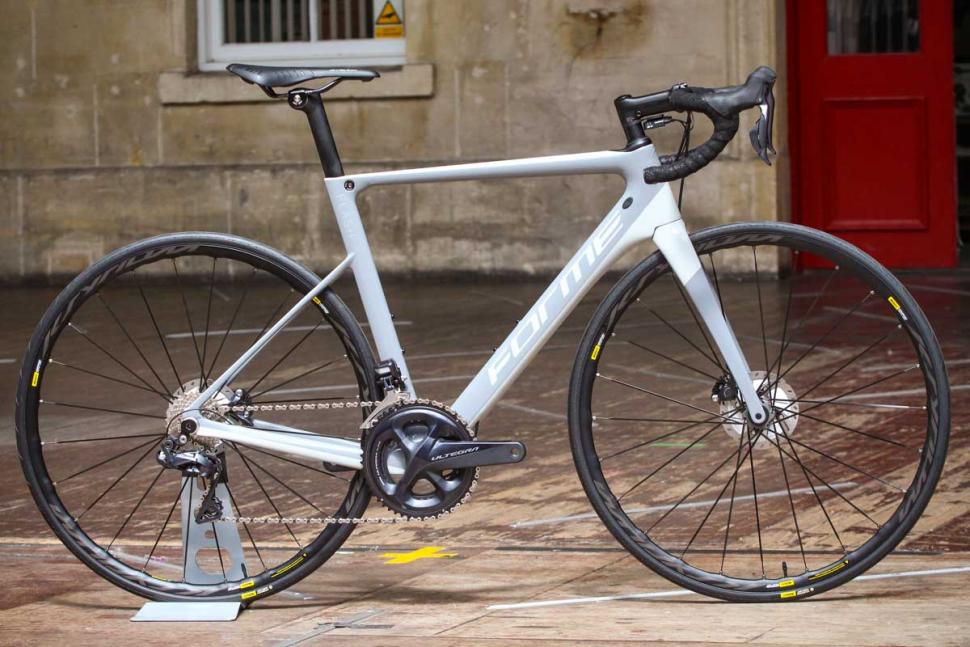

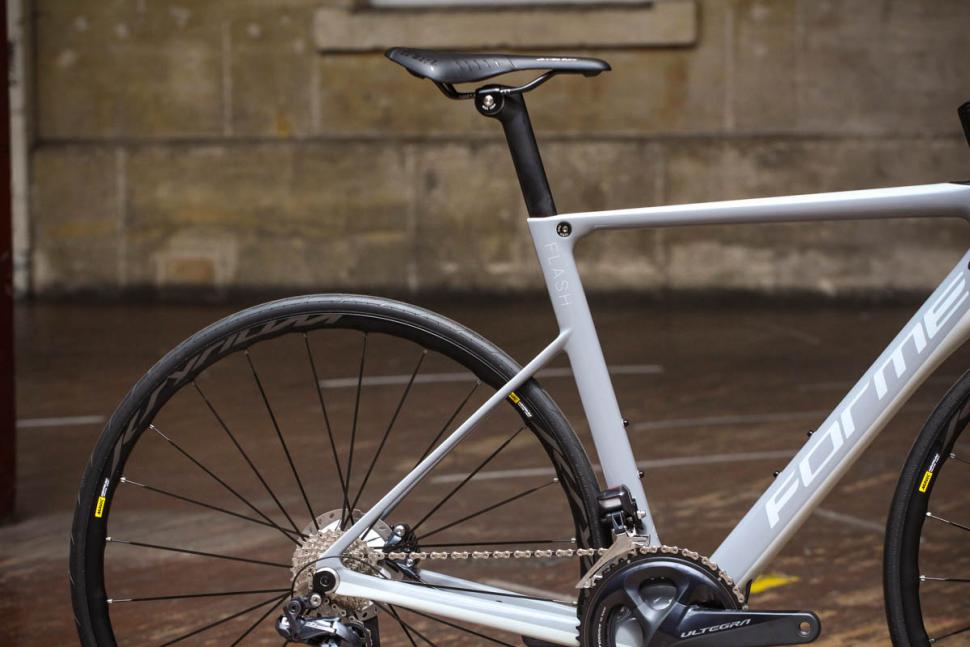



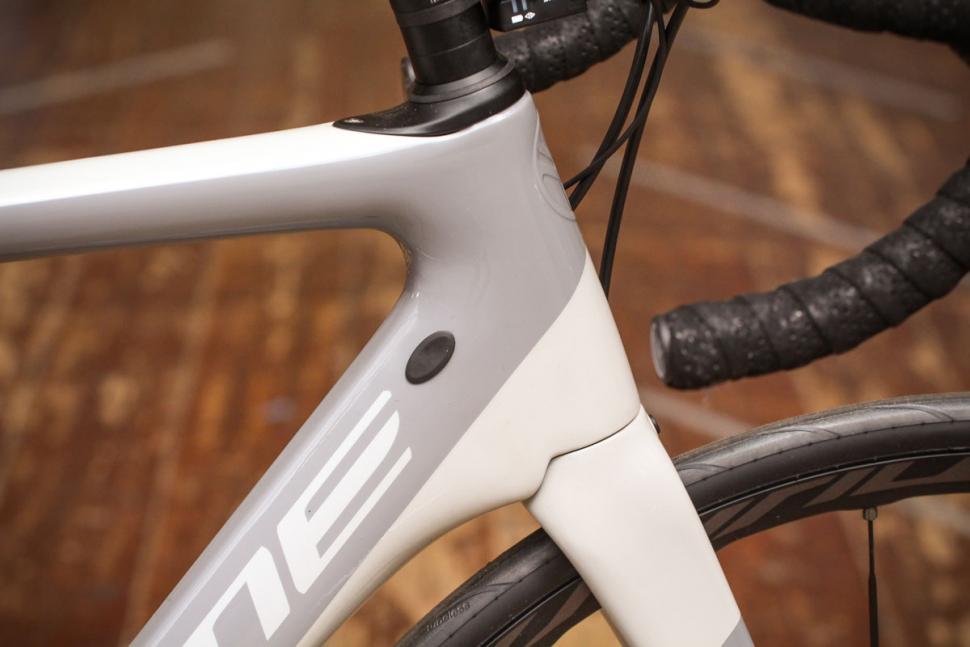
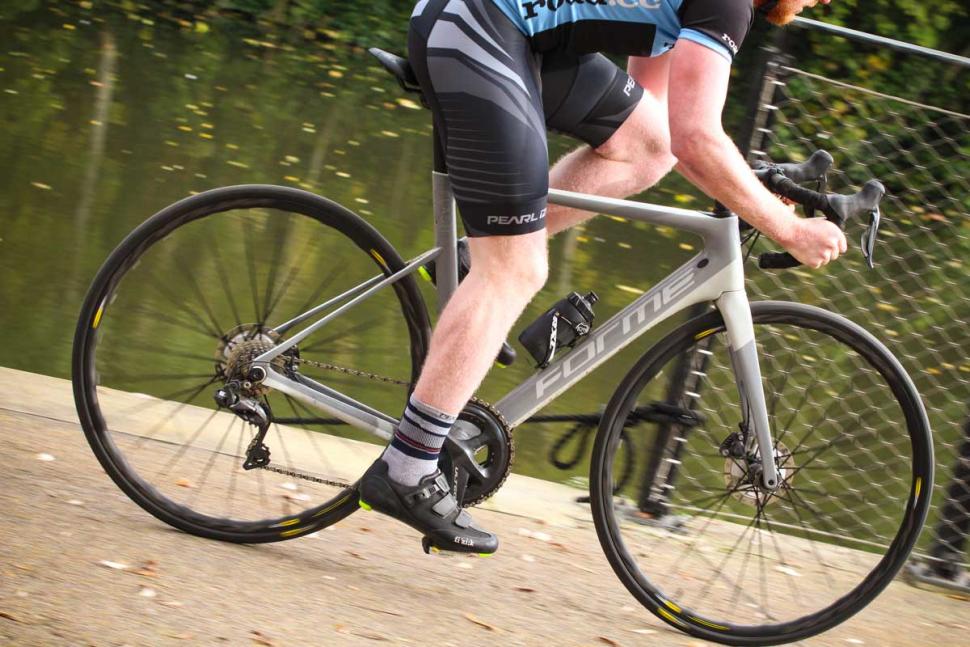
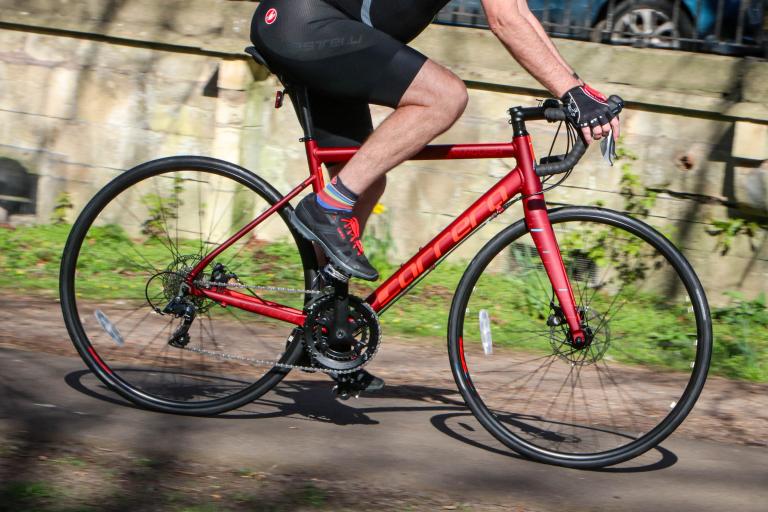



Add new comment
3 comments
My first carbon road bike was a forme which i really enjoyed, and was due to upgrade just before the release of the flash, and I was willing to wait I phoned up and asked about the price for a non Di2 ultegra with discs and lets just say the price I was actually quoted was substaintially more than given here
Not off topic at all. I really don’t like the dropped stays on a bike. It just doesn’t look right to have two triangles meeting on a side rather than the apex. They are shorter and therefore possibly lighter, but they put a bending moment into the seat tube which otherwise would be transmitted more directly to the top tube.
Probably some very good lateral stiffness vertical compliance arguments. Still looks inelegant to me, but everyone may have their own view of the aesthetics.
Bit off topic ,but am i the only one that thinks that dropped seat stays look bloody awful ?